|
Lost Buildings of Wolverhampton |
|
The Exchange
The Exchange stood at the end of Exchange Street (which may have been
cut through to provide access to it), immediately in front of the west
front of St. Peter's, where the gardens, war memorial and statute of
Lady Wulfruna now stand. |
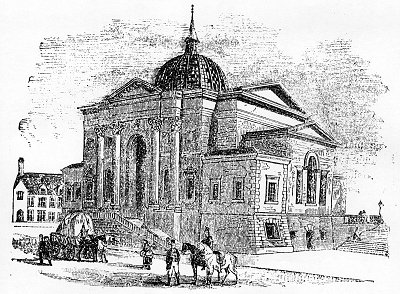 |
This
drawing may have been made before the Exchange was even
built.
It shows the
glass dome and an entrance which does not appear again.
Maybe it was
never built that way, maybe it was changed at the same time
the dome was removed. The steps to the right may be the same
steps as are still there. |
| Nobody has a good word to say for this building. John
Roper, in "Wolverhampton as it Was", Vol. 1., calls it a "Victorian
white elephant ... erected at a cost of £11,000 by a company of
shareholders between 1850 and 1853. It was designed by G. T. Robinson,
another Wolverhampton architect and a rival of Edward Banks. Its life
was short and the building was demolished in 1898." He returns to the
subject in Vol.2 of that work, saying the building was "originally
intended simply as a Corn Exchange for the use of farmers and millers"
and that "the large glass cupola ... had to be removed in 1851 'having
given undeniable signs of depression'. One assumes that the depression
was structural, not the result of feeling bad about all the criticism it
got. |
| This photo gives a good impression of how this
rather bleak-looking building would have dominated it surroundings.
The awkward plinth may have been designed to deal with the
difference in ground levels between front and back.
The posters show
the proprietors' enthusiasm for raising money anyhow.
From an
old glass slide, courtesy David Clare. |
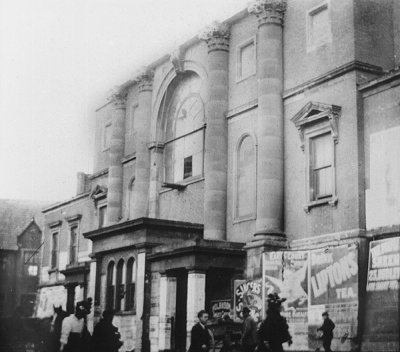 |
| Frank Mason, The Book of Wolverhampton, p.109 has
slightly different details but not a better opinion: "The Exchange,
built 1851. A good example of bad Victorian architecture, it immediately
began to fall down and had to be strengthened and the dome removed. It
was described as the only building ever constructed with the foundations
at the top. The lighting was bad, and the acoustics worse. In 1863 the
Agricultural Hall was built for the greater convenience of the farmers.
The Exchange was pulled down in 1898." |
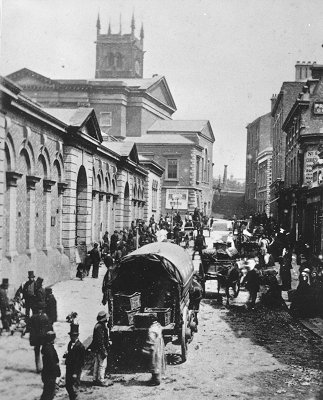 |
This photo shows the Exchange in its setting.
The road is Cheapside, with the retail market on the left and
the Exchange beyond it.
The pillar in St. Peter's
churchyard can be seen in the centre distance.
Note how
the front of St. Peter's was completely obscured. |
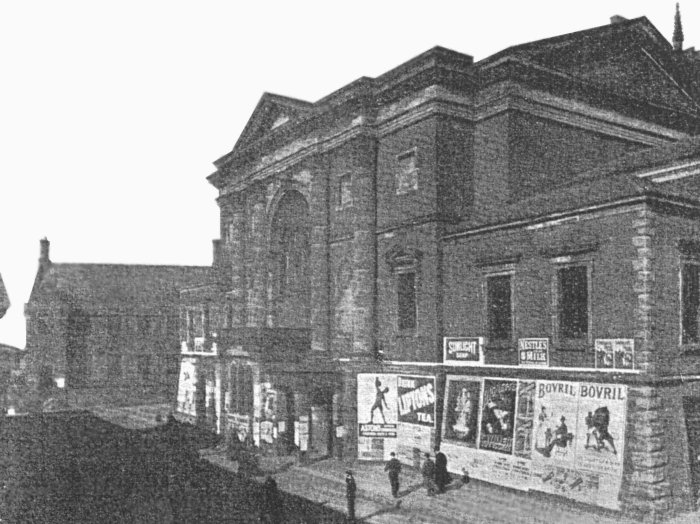
The Exchange. From the Wolverhampton
Journal, January 1907.
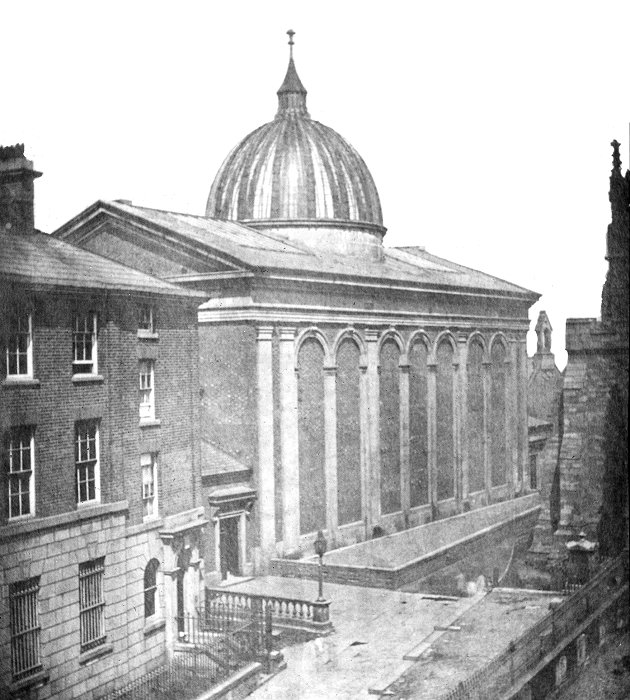
The back of the Exchange. From
the Wolverhampton Journal, March 1904.
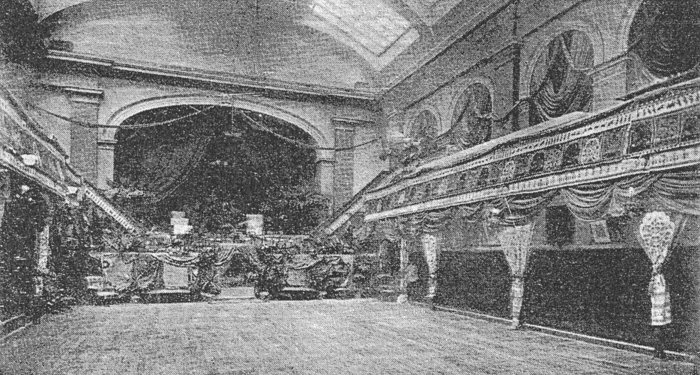
The interior of the Exchange. From the
Wolverhampton Journal, January 1907.
| But in his work, "Yesterday's Town: Wolverhampton", p99, Mason
refers to Dickens' use of the Exchange as for his public readings
and his pleasure at the enthusiastic audiences he always found
there. He also refers to Dickens commenting, in a letter, about
seeing "the iron masters standing out in the streets where they
conduct their business, making such a noise they confuse me
horribly". Of this Mason says: "he shows how unpopular it was as a
place of business. The ironmasters were still using the pavement as
they had always done." This suggests, and Upton is with him, that
the building was intended, at least in part, for the ironmasters to
conduct their business in. Upton and Mason agree that the
ironmasters never did; and everyone seems to agree that, if the corn
merchants did, they certainly didn't like it. But there are many references and much evidence of the other uses to
which the building was put, bad acoustics and lighting or not. Dickens
was not the only performer who used the building. Many visiting artists
did so and many plays and concerts were put on. Probably the owners were
letting it out for whatever use they could find.
Anyway, nobody seems to have objected to its demolition and its
disappearance certainly opened up the front of St. Peter's to public
view.
 |
Return to the
previous page |
|
|